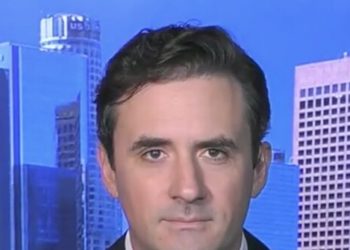U.S. Drugmakers Warn White House of Chaos as Trump Weighs Curbs on China
The Trump administration has been discussing severe restrictions on medicines from China that, if enacted, could upend the American pharmaceutical...
Mendoza, Cooper lead No. 22 Indiana to 73-0 victory over overmatched Indiana State
BLOOMINGTON, Ind. (AP) — Fernando Mendoza threw five first-half touchdown passes, Omar Cooper Jr. tied an Indiana record with four...
Jacob deGrom gets present in Citi Field return: a 6-run lead before throwing his first pitch
NEW YORK (AP) — Jacob deGrom received a present in his return to Citi Field: a a six-run lead before...
A young boy dies in freak accident on a Ventura beach. The family is overwhelmed by donations
On a balmy afternoon in late August, 5-year-old Maxwell Haworth was playing on Rincon Beach in Ventura with his best...
Canelo vs. Crawford: An era-defining fight with legacies at stake
LAS VEGAS, Nevada — Terence “Bud” Crawford jumped two weight classes to set a career high on the scales at Friday’s weigh-in...
Southern California woman arrested for alleged sexual abuse of multiple children
A Southern California woman was arrested on suspicion of the years-long sexual abuse of multiple children. The suspect was identified...
Trump Praises Jair Bolsonaro After He’s Convicted for Plotting a Coup
President Donald Trump was—predictably—dismayed by the news that Brazil’s former right-wing president, Jair Bolsonaro, had been sentenced to 27 years...
Belarus: Freed prisoners were forcibly deported — opposition
Dozens of political prisoners who were released by as part of a US-brokered deal this week were forcibly deported, Sviatlana Tsikhanouskaya,...
New Jersey family of 3 charged with killing man and chopping up body with chainsaw: prosecutor
A twisted New Jersey father shot and killed another man — and then enlisted his wife and son to chop...
Trump, 79, Can’t Remember Which Country’s War He Solved
President Donald Trump appeared slightly confused in a Friday morning interview with Fox & Friends—the same appearance where he announced...

















